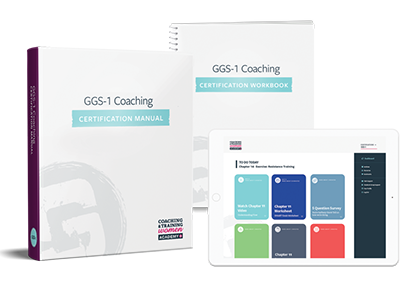If we work in the health and fitness industry, that means we’ve got it all together, right? We look good, feel good, move well, and love our bodies too?
Ummm… Nope.
Whether we’re coaches, trainers, or other specialists, most of us have our own struggles and challenges when it comes to body image.
Here’s the reality: Health and fitness professionals aren’t above or immune to the body image struggles they help many of their clients navigate. In fact, our culture, and the fitness industry, in particular, can be ruthless toward coaches and trainers who don’t fit the image typically associated with our profession.
Some quick stats: Approximately 80 percent of women in the U.S. and Canada struggle with body image. In other words, it’s super common — and that includes trainers, coaches, and other health professionals.
On TV, on social media, and in magazines, images of personal trainers are pretty consistent — and fall within a pretty narrow idea of what fit and healthy looks like.
Want to test this out? Try Googling “personal trainer.” You’ll find plenty of images of men, mostly white, lean, young, visibly muscled, and with no visible disabilities.
Google “female personal trainer” and you’ll find mostly while, lean, young, able-bodied and lightly muscled women in skimpy clothes. (This exercise is adapted from Dr. Larissa Mercado-Lopez’s example using the term “fit woman.”)
Do You Need to “Look Fit” to Be a Successful Coach or Trainer?
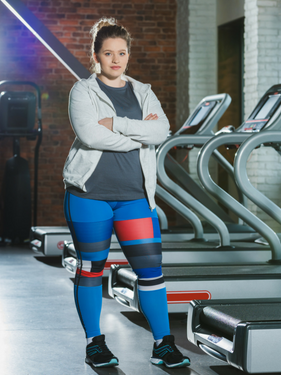 The idea persists in many corners of the fitness industry that when you’re a trainer, your body should be your calling card — and if you “can’t walk the talk,” you have no business helping others toward their fitness goals.
The idea persists in many corners of the fitness industry that when you’re a trainer, your body should be your calling card — and if you “can’t walk the talk,” you have no business helping others toward their fitness goals.
Meanwhile, in the real world, many extraordinary coaches — who really know their stuff and who are out there in the trenches helping their clients live their best lives — struggle when their body size, body fat, strength levels, ability, or age doesn’t line up with what they’ve been told a coach should look like.
They may look nothing like trainers they see on TV, on their Instagram feed, or in a workout video. Because, after all, they’re human. Like me. Like you.
I’ve been there.
At times, I’ve personally been criticized for not being the “picture-perfect” image expected of a fitness professional.
Several years ago, after a difficult period rife with personal struggles including the unexpected death of my father, the end of a six-year relationship, the loss of one of my businesses, and an injury that led to chronic pain, I gained about 10–15 pounds.
During that year:
- I received scrutiny and negative comments on my YouTube channel. Viewers would ask, “What’s wrong with your body? Why don’t you look the same as you used to?”
- A woman in my community warned other women not to come to my gym because they might end up “looking like me.”
- And a colleague who was speaking at an event I was hosting insinuated to my staff that I was fat (believing that calling me fat was an insult).
And to be clear, in many ways I fit into our society’s expectations of what a trainer should look like. I’m young, white, able-bodied, and have visible muscle tone. I had simply gained a bit more body fat and wasn’t looking as lean and “fit” as our fitness culture suggests all fitness professionals should look.
With so much criticism and scrutiny, and such a narrow notion of what fit and healthy looks like, no wonder so many of us struggle with self-doubt if we don’t fit the mold perfectly.
Life is (hopefully) long, and bodies change.
If you feel like you’re in mint condition from head to toe, that’s awesome. But there’s a good chance that you’ll experience a change at some point.
As we go through common life experiences, most of us will experience a fluctuation in our body shape, body fat, or fitness.
Such changes may be related to the demands of parenting, the general busy-ness of working or running a business, illness, injury or pain, caring for a loved one, moving, financial stress, grief after a loss, or just aging in general. Even just a natural shift in interest or priorities can bring a shift to our appearance.
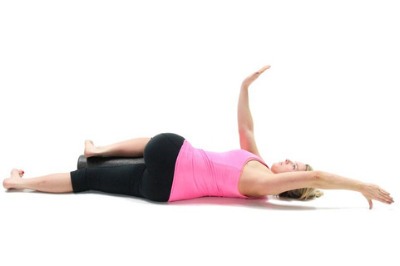 And there’s nothing wrong with this. It’s real life.
And there’s nothing wrong with this. It’s real life.
Quick personal story about this: In 2012, the same year I mentioned earlier, I injured my back deadlifting in the gym and started having chronic back pain.
At a Girls Gone Strong meetup later that year, I was working out with some fellow fitness professional friends. As they did weighted pull-ups and deadlifted more than double their body weight, I lay on the ground doing breathing and rehab exercises.
I remember feeling so discouraged and depressed because so much of my self-worth was still wrapped up how my body looked and what it could do.
Now I understand that there was nothing wrong with me. My body was responding to the demands and changes going on in my life.
That experience didn’t make me a worse coach or fitness professional — in fact, it made me a better one.
In the end, it made me:
- More compassionate toward myself and others.
- More understanding of what other people might be going through.
- More capable of helping clients adapt their health and fitness practices to the challenges and changes life brought to their doorstep.
- More relatable to my clients who were struggling with injury, chronic pain, or loss of ability.
I learned that, with the right mindset and approach, personally struggling with body image can actually be an asset for any health and professional.
Here’s how you can do that.
1. Know who you want to help.
Here’s the deal: If a client doesn’t want to work with you based on your size or age, for example, they are probably not your ideal client.
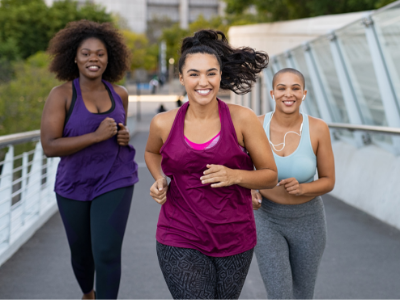 For every client who doesn’t want to work with you because of your body size or age, there are likely other clients who do want to work with you precisely because they feel understood by you.
For every client who doesn’t want to work with you because of your body size or age, there are likely other clients who do want to work with you precisely because they feel understood by you.
Think about it like this: So many people (especially women!) are struggling with body image. As mentioned, more than 80 percent of women report being dissatisfied with their body.
In addition, 75 percent report engaging in disordered eating behaviors and symptoms — and most health, fitness, and nutrition professionals don’t know how to help them.
You could be the coach who “gets it.”
If you learn how to help clients (once again, especially women!) with body image issues, you will not only make a big difference in their lives, you will tap into a lucrative client base while also embracing your own body and experience.
Bottom line here: Dedicate yourself to helping the people who need you.
They’re the people who will appreciate and benefit from the unique insight, understanding, and compassion you can bring.
2. Lean into it.
You may not know it, but your familiarity and personal experience with body image struggles actually provide amazing coaching insight.
If you want to help people (especially women) navigate their own challenges with body image, move past fad dieting and disordered eating, and avoid falling into the comparison trap, you already have a head start because you know how they feel.
You can you relate to what they’re going through, and you may already have a good idea of the type of support they need.
Don’t downplay how valuable this is. Let your own experiences enhance your compassion and empathy for clients who are struggling.
Lean into questions and conversations about body image.
Rather than turning inward and worrying about how your body shape, size, or appearance might be perceived in the fitness space, own it! Commit to learning the best approaches for working through body image struggles and set yourself apart in your field as an amazing resource for women.
3. Acknowledge and embrace life’s changes.
As I pointed out earlier, the human body ebbs and flows in response to life’s circumstances. These fluctuations are normal and healthy.
For most of us, the shape of our body, the amount of body fat we carry, and our fitness level will fluctuate as we move through life.
Coaches are not immune to the full spectrum of life experiences.
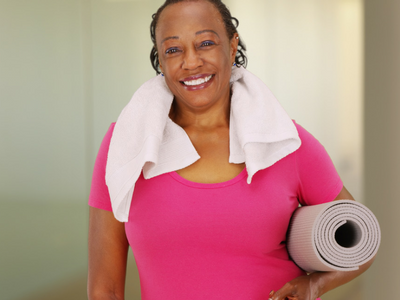 Phases of life that rob us of sleep and ramp up our stress levels often result in a bit of weight or fat gain. Other things such as travel, busy periods at work, teething babies, back-to-school season, a big move, and large family events can be disruptive to our usual routines and can potentially have the same effect.
Phases of life that rob us of sleep and ramp up our stress levels often result in a bit of weight or fat gain. Other things such as travel, busy periods at work, teething babies, back-to-school season, a big move, and large family events can be disruptive to our usual routines and can potentially have the same effect.
It’s OK, and it’s often temporary. There’s this mistaken belief that a person’s weight should remain the same year ‘round.
It’s not that it necessarily shouldn’t remain the same, but fluctuations are common and normal, depending on what’s going on.
Don’t hold yourself to unrealistic standards to which you would never hold your clients.
And don’t bet on your abs to attract new clients and keep your current ones coming back. Bet instead on your skills, your knowledge, your compassion and understanding, and your lifelong commitment to being a great coach and role model.
4. Understand and unpack your beliefs.
As we mentioned earlier, the media tends to present a pretty narrow definition of what a trainer or fitness professional “should” look like. And with such pervasive messaging all around you, it’s easy to let that definition mess with your head and make you feel like you don’t fit in or aren’t qualified.
But this is an opportunity to really get at the heart of those messages, understand where they come up, and unpack your own beliefs.
This can involve recognizing what beliefs you may have (whether subconsciously or consciously), getting introspective about them, and sometimes deliberately reframing them.
For example…
Beliefs about sex and gender.
Some very capable women in the fitness industry have told me that some men won’t hire them because they don’t trust that a woman can help them with their goals. Yet, we don’t often hear women say they don’t believe male coaches can do anything for them.
Think back on the images that show up when you Google “personal trainer” (mostly young, muscular men). And think about the fact that we live in a culture that still encourages women to be small… Is it surprising that many still hold on to these beliefs?
Beliefs about race.
There are some forms of exercise that some people aren’t “expected” to do or certain fitness communities where some people don’t feel welcome or represented.
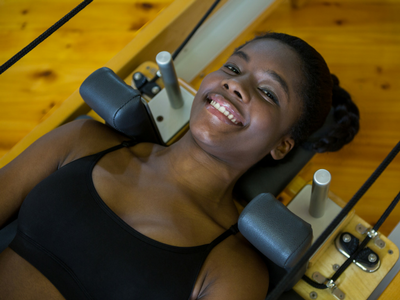 For example, Sonja R. Price Herbert started Black Girl Pilates because many Black women felt Pilates wasn’t for them. They didn’t see many Pilates instructors who looked like them or knew anyone in their communities who were doing Pilates.
For example, Sonja R. Price Herbert started Black Girl Pilates because many Black women felt Pilates wasn’t for them. They didn’t see many Pilates instructors who looked like them or knew anyone in their communities who were doing Pilates.
Why might that be? Do Black women really not do Pilates? Or is it that Black women are not represented in Pilates media and advertising, so fewer Black women consider trying Pilates and becoming instructors?
Beliefs about age.
If you have limiting beliefs about age, try reframing how you think about it. For example, are you “too old to be a trainer?” Or are you a seasoned coach with wisdom experience earned over many years?
Beliefs about size.
Are you “too big to be a trainer?” Or are you a trainer who has walked (or is walking) a proverbial mile in your clients’ shoes and knows first hand what they’re going through?
Beliefs about eating habits.
Have you “fallen off the wagon?” Or are you a trainer who understands what it’s like when life’s circumstances cause a shift in priorities and affect your ability to care for yourself, and you have personal experience with strategies that can help you resume better habits?
By recognizing and evolving your own beliefs, you will be better prepared to understand, connect with, and empower your clients.
Not to mention you will gain freedom from old, self-limiting beliefs yourself.
(By the way, we explore this more deeply in our GGS Level 1 Coaching Certification, where we offer a host of strategies to help you identify, examine, and work through your beliefs.)
Hint: This exercise of recognizing and reframing your beliefs is also something you may try with your clients.
5. Build your own body image bootcamp.
As a fitness professional, you probably help many of your clients work through their own body image struggles with empathy and compassion. You deserve to turn that same empathy and compassion toward yourself and give yourself some grace throughout the process.
As you would with your clients, here are some strategies you can put into practice in your own life.
Take notice of every time you are having a negative thought about your body for the next two weeks.
Every time you notice a negative thought, soften it just a little, neutralize it, or reframe it into a positive thought. For example, “I hate my thighs” could become “My thighs aren’t my favorite” (softer), “This is what my thighs look like right now” (neutral), or “My thighs are really strong and powerful” (positive).
You can also blow up the negative thought completely by making yourself laugh: “My thighs touch so I can have more room to hold more puppies and catch all the snacks that fall on my lap.”
Find the approach that feels best to you. It’s different for each person. And some may feel better on different days or at different times, or depending on the part of your body you’re thinking about.
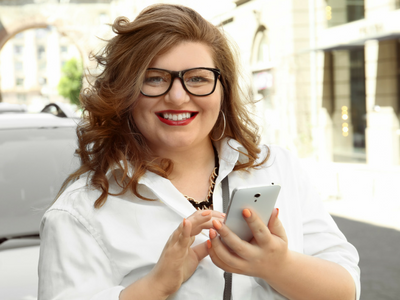 Spend some time reprioritizing what you see on your social media feed.
Spend some time reprioritizing what you see on your social media feed.
Stop following people and companies whose content makes you feel bad about yourself. Start following people and companies that include many different body shapes and sizes, ages, races, and ability levels in their feed.
Start following someone who inspires you for reasons other than what their body looks like.
Make a list of things you’re really good at and accomplishments that have nothing to do with how your body looks.
Keep a journal in which you write down things you’re happy about or proud of — and I use the term “journal” loosely. This could be as simple as a list in your phone’s “notes” app.
Some examples:
- “I’m a really good listener.”
- “I’m a very trustworthy person.”
- “I have an infectious laugh that makes other people smile.”
- “I’m progressing steadily through my certification despite life’s ups and downs.”
- “My client told me I’m the first trainer who helps her feel comfortable in the gym.”
- “I’m really reliable. I always do what I say I’m going to do.”
Make a list of things you love (or like, or tolerate) about your body.
Your list can include things related to your performance, your appearance, or neither. For example:
- “I love how loud and ridiculous my laugh is.”
- “I like how big my hands are. They make me feel strong and capable.”
- “I like how I can just wash my hair and let it air dry and it still looks OK.”
- “I’m really grateful that my body isn’t allergic to animals because I love them.”
- “My quads are huge and I tolerate them because they help me squat a lot of weight.”
- “I’m really good at heavy Turkish get-ups.”
Remember: women are whole people with ownership and autonomy over their own bodies.
That is, they get to choose how to use their body, what decisions they make about their body, and what goals they have. This is as true for your client as it is for you.
Hint: You can use the above practices and exercises with your clients too.
6. Develop your confidence from the inside out.
Having confidence that you can help your clients work through body image struggles is an incredibly valuable skill.
(Remember: about 80 percent of women struggle with their body image. That’s eight out of ten women; women from all walks of life.)
Your work in this area is so important. And tons of clients are out there, waiting for you to help them!
But what is a confident coach? For one thing, it has nothing to do with having six-pack abs.
Confidence is built from the inside out.
 A confident coach has put in the time and effort to understand where clients are coming from and how to serve them.
A confident coach has put in the time and effort to understand where clients are coming from and how to serve them.- A confidence coach doesn’t just inform their clients. A confident coach knows how to empower their clients.
- A confident coach knows that confidence is built through time and effort. It requires stretching yourself to try new things, expand your understanding, and get out of your comfort zone.
- A confident coach embraces their personal experiences and knows how to turn them into a superpower.
Right now, your own struggles might seem like a limitation. But if you embrace them as part of your experience and combine them with ongoing training and education, they can become one of your greatest assets.
Finally, and this is an important point…
Confident coaches know when to say “I don’t know” and “That’s beyond my scope of practice.”
Understand your scope of practice and know when and to whom you should refer a client when necessary.
7. Lead by example… and keep learning.
As a fitness professional, one of the best things you can do is lead by example.
You have an incredible opportunity to be a force for good in your clients’ lives.
Your ability to help your clients is what’s most important. It’s what will build your track record and reputation and help you become a successful coach.
Keep honing your skills, keep learning how to help your clients, and keep showing up authentically. Have confidence in knowing that you do belong in the fitness space and you are qualified to lead and to help others.
Remember: you have much more to offer your clients than “fitspo abs.”
What your body looks like has no bearing on your knowledge or your capabilities as a coach.
Don’t let those beliefs hold you back. Leave those messages behind and focus on being a great coach.
Embrace this opportunity, and a thriving career filled with meaningful work awaits.
If you’re a health, fitness, or nutrition professional (or you want to be)…
Learning how to coach clients, patients, friends, or family members toward their health, fitness, and performance goals — while navigating your own body image struggles — is both an art and a science.
If you’d like to learn more about both, consider enrolling in our GGS Level 1 Certification, which opens for enrollment VERY soon.
Learning how to properly coach women could transform your career — and change the lives of your clients.
And our Girls Gone Strong Level 1 Certification is the most respected coaching certification in the world for working with women.
Most coaches and trainers don’t realize that coaching women is different from coaching men.
The truth is, coaching women requires a different set of skills and knowledge that goes beyond understanding the anatomical differences.
This certification gives health, fitness, and nutrition professionals — and aspiring professionals — the skillset, knowledge, and toolkit they need to successfully and confidently coach women.
Our Coaching and Training Women Academy has certified thousands of professionals in 60+ countries around the world. Their results have been astonishing.
Now, we’re offering all that knowledge and training to you.
Interested? Add your name to our no-obligation pre-sale list. You’ll save up to 33% and secure your spots 24-48 hours before the public.
On April 16th, 2019 we’re opening enrollment to our GGS Level 1 Certification to a limited number of students.
To learn more, check out our pre-sale list which gives you two huge advantages:
- You’ll pay less than everyone else. The students who are most eager to level up their coaching skills are our most successful students, so we like to reward those who join the pre-sale list by offering a discount of up to 33% off the general price.
- You’ll get to enroll early. We only open enrollment twice per year, and spots always sell out FAST. By joining the pre-sale list, you have the chance to enroll 24-48 hours before the general public, increasing your chances of getting a spot.
Women want to work with coaches who “get it.”
They’re looking for health, fitness, and nutrition pros who understand them, know how to support them, and are committed to making a REAL difference to their health.
And our GGS Level 1 Certification is the solution. This is your chance.
Stand out. Build a thriving career. And make the kind of difference you were born to make.
